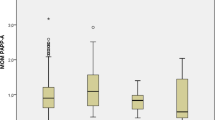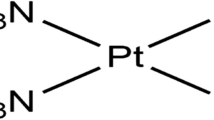Abstract
Preeclampsia (PE) is a pregnancy complication commonly characterized by high blood pressure. Although it is generally believed that the placenta is the root cause of PE, the exact pathogenesis is unknown; consequently, there is no standard clinical treatment. Therefore, it is necessary to explore new therapeutic drugs. Several studies have reported that pyrroloquinoline quinone (PQQ) exhibits anti-inflammatory and antioxidative effects. The purpose of this study was to investigate the protective effect of PQQ diet supplementation on PE-like rat models. L-NAME induced PE-like model rats were intraperitonially administrated with PQQ. The results showed that PQQ significantly improved clinical manifestations and pregnancy outcomes of PE-like rats. The levels of related inflammatory and antioxidant markers were also significantly reversed. A mechanism study showed that PQQ may achieve the above therapeutic effects by inhibiting NF-κB and promoting Nrf2 antioxidant pathways. In conclusion, we showed the protective effect of PQQ on PE-like model rats, by improving anti-inflammation and antioxidation effect through the NF-κB-Nrf2 pathway.




Similar content being viewed by others
Data Availability
All data generated or analyzed during this study were included in this article.
Code Availability
Not applicable.
References
Filipek A, Jurewicz E. Preeclampsia - a disease of pregnant women. Postepy Biochem. 2018;64:232–229.
Ramos JGL, Sass N, Costa SHM. Preeclampsia. Rev Bras Ginecol Obstet. 2017;39:496–512.
Rana S, Lemoine E, Granger JP, Karumanchi SA. Preeclampsia: pathophysiology, challenges, and perspectives. Circ Res. 2019;124:1094–112.
Paauw ND, Lely AT. Cardiovascular sequels during and after preeclampsia. Adv Exp Med Biol. 2018;1065:455–70.
Harmon AC, Cornelius DC, Amaral LM, Faulkner JL, Cunningham MW Jr, Wallace K, LaMarca B. The role of inflammation in the pathology of preeclampsia, Clinical science (London. England. 1979;130(2016):409–19.
Fu JY, Jing Y, Xiao YP, Wang XH, Guo YW, Zhu YJ. Astaxanthin inhibiting oxidative stress damage of placental trophoblast cells in vitro. Syst Biol Reprod Med. 2020;1–10.
Zhang P, Ye Y, Qian Y, Yin B, Zhao J, Zhu S, Zhang L, Yan M. The effect of pyrroloquinoline quinone on apoptosis and autophagy in traumatic brain injury. CNS Neurol Disord: Drug Targets. 2017;16:724–36.
Akagawa M, Nakano M, Ikemoto K. Recent progress in studies on the health benefits of pyrroloquinoline quinone. Biosci Biotechnol Biochem. 2016;80:13–22.
Zheng L, Huang J, Su Y, Wang F, Kong H, Xin H. Vitexin ameliorates preeclampsia phenotypes by inhibiting TFPI-2 and HIF-1α/VEGF in a l-NAME induced rat model. Drug Dev Res. 2019;80:1120–7.
Prater MR, Laudermilch CL, Liang C, Holladay SD. Placental oxidative stress alters expression of murine osteogenic genes and impairs fetal skeletal formation. Placenta. 2008;29:802–8.
Sugino N, Takiguchi S, Umekawa T, Heazell A, Caniggia I. Oxidative stress and pregnancy outcome: a workshop report. Placenta. 2007;28(Suppl A):S48–50.
de Oliveira LG, Karumanchi A, Sass N. Preeclampsia: oxidative stress, inflammation and endothelial dysfunction. Rev Bras Ginecol Obstet. 2010;32:609–16.
Tenório MB, Ferreira RC, Moura FA, Bueno NB, de Oliveira ACM, Goulart MOF. Cross-talk between oxidative stress and inflammation in preeclampsia. Oxid Med Cell Longev. 2019;2019:8238727.
Zheng YW, Zhang JY, Zhou HB, Guo YP, Ma QG, Ji C, Zhao LH. Effects of dietary pyrroloquinoline quinone disodium supplementation on inflammatory responses, oxidative stress, and intestinal morphology in broiler chickens challenged with lipopolysaccharide. Poult Sci. 2020;99:5389–98.
Samuel KG, Zhang HJ, Wang J, Wu SG, Yue HY, Sun LL, Qi GH. Effects of dietary pyrroloquinoline quinone disodium on growth performance, carcass yield and antioxidant status of broiler chicks. Animal. 2015;9:409–16.
Singh AK, Pandey SK, Saha G, Gattupalli NK. Pyrroloquinoline quinone (PQQ) producing Escherichia coli Nissle 1917 (EcN) alleviates age associated oxidative stress and hyperlipidemia, and improves mitochondrial function in ageing rats. Exp Gerontol. 2015;66:1–9.
Zhang B, Yang W, Zhang H, He S, Meng Q, Chen Z, Shan A. Effect of pyrroloquinoline quinone disodium in female rats during gestating and lactating on reproductive performance and the intestinal barrier functions in the progeny. Br J Nutr. 2019;121:818–30.
Vukomanovic D, Jia Z, Nakatsu K, Smith GN, Ozolinš TRS. Riboflavin and pyrroloquinoline quinone generate carbon monoxide in the presence of tissue microsomes or recombinant human cytochrome P-450 oxidoreductase: implications for possible roles in gasotransmission. Can J Physiol Pharmacol. 2020;98:336–42.
Chen QM, Maltagliati AJ. Nrf2 at the heart of oxidative stress and cardiac protection. Physiol Genomics. 2018;50:77–97.
Yu M, Li H, Liu Q, Liu F, Tang L, Li C, Yuan Y, Zhan Y, Xu W, Li W, Chen H, Ge C, Wang J, Yang X. Nuclear factor p65 interacts with Keap1 to repress the Nrf2-ARE pathway. Cell Signal. 2011;23:883–92.
Waker CA, Kaufman MR, Brown TL. Current state of preeclampsia mouse models: approaches, relevance, and standardization. Front Physiol. 2021;12:681632.
Acknowledgements
We thank all of the project participants for their contributions.
Funding
This study was supported by the Changzhou Municipal Health Commission (CJ20200096).
Author information
Authors and Affiliations
Contributions
Huihui Wang and Xuting Shi contributed to the study conception and design. Material preparation, data collection, and analysis were performed by Xuting Shi. The first draft of the manuscript was written by Xuting Shi and Minhui Li and all authors commented on previous versions of the manuscript. All authors read and approved the final manuscript.
Corresponding author
Ethics declarations
Ethics Approval
Animal tests conducted in this study were approved by the Ethics Committee of Jiangsu Keygentec biotechnology experimental animal center (IACUC-001–19).
Consent to Participate
Not applicable.
Consent for Publication
Not applicable.
Conflict of Interest
The authors declare that they have no conflict of interest.
Rights and permissions
About this article
Cite this article
Wang, H., Li, M., Chen, P. et al. Anti-inflammatory and Antioxidant Effects of Pyrroloquinoline Quinone in L-NAME-Induced Preeclampsia-Like Rat Model. Reprod. Sci. 29, 578–585 (2022). https://doi.org/10.1007/s43032-021-00743-8
Received:
Accepted:
Published:
Issue Date:
DOI: https://doi.org/10.1007/s43032-021-00743-8




